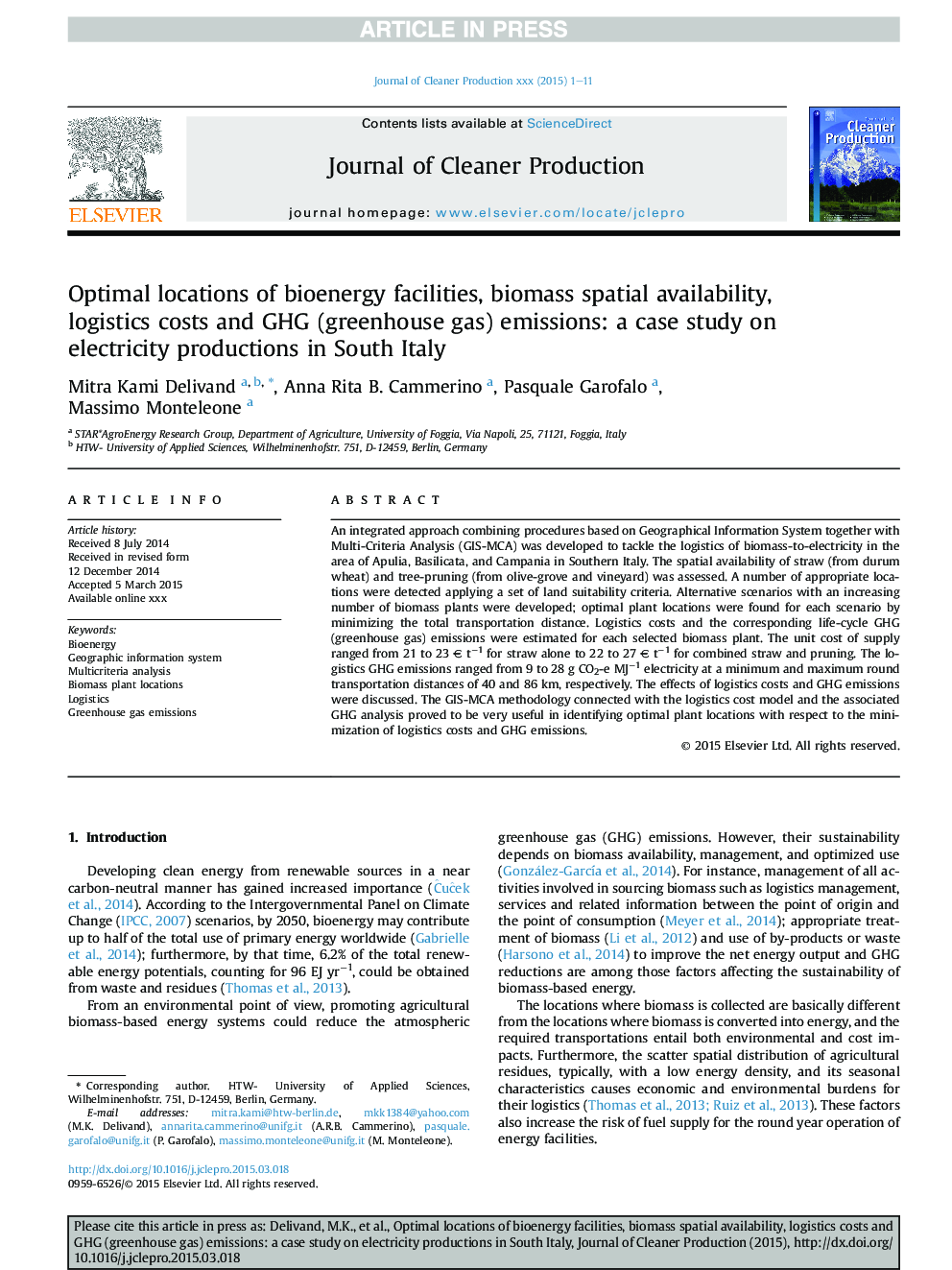| Article ID | Journal | Published Year | Pages | File Type |
|---|---|---|---|---|
| 8104052 | Journal of Cleaner Production | 2015 | 11 Pages |
Abstract
An integrated approach combining procedures based on Geographical Information System together with Multi-Criteria Analysis (GIS-MCA) was developed to tackle the logistics of biomass-to-electricity in the area of Apulia, Basilicata, and Campania in Southern Italy. The spatial availability of straw (from durum wheat) and tree-pruning (from olive-grove and vineyard) was assessed. A number of appropriate locations were detected applying a set of land suitability criteria. Alternative scenarios with an increasing number of biomass plants were developed; optimal plant locations were found for each scenario by minimizing the total transportation distance. Logistics costs and the corresponding life-cycle GHG (greenhouse gas) emissions were estimated for each selected biomass plant. The unit cost of supply ranged from 21 to 23 â¬Â tâ1 for straw alone to 22 to 27 â¬Â tâ1 for combined straw and pruning. The logistics GHG emissions ranged from 9 to 28 g CO2-e MJâ1 electricity at a minimum and maximum round transportation distances of 40 and 86 km, respectively. The effects of logistics costs and GHG emissions were discussed. The GIS-MCA methodology connected with the logistics cost model and the associated GHG analysis proved to be very useful in identifying optimal plant locations with respect to the minimization of logistics costs and GHG emissions.
Keywords
Related Topics
Physical Sciences and Engineering
Energy
Renewable Energy, Sustainability and the Environment
Authors
Mitra Kami Delivand, Anna Rita B. Cammerino, Pasquale Garofalo, Massimo Monteleone,
